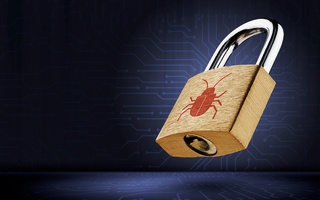The integration of BIM, smart devices and the Internet of Things in construction engineering is both a necessity and the most rational way to apply technology.
How Does Smart Construction Work
А comprehensive approach to smart device operation and interaction between them ensures continuous interaction between the digital prototype of the structure and its physical counterpart. This approach that can solve one of the most pressing problems in the development of construction and infrastructure facilities—bridging the gap between the stages of their lifecycle and establishing full control over operations.
The use of sensors and the Internet of things to obtain all types of data has significantly influenced the development of information modeling. With BIM solutions, designers and builders can interact with each other and exchange data; sensors, drones, and other smart assistants used on the construction site and in the finished building send operational information to the cloud, refining the model. The devices monitor the real-time on-site performance and thereby help to ensure site safety.
BIM technology helps to control every construction stage: comparison of the actual state with technical data about a specific construction site can help the engineers to prevent deviations from the statement of work, procurement and supply plans.
Data collected for the information model by drones accelerate the detection of any non-conformances, errors, and deviations from the project implementation plan. As a result, errors can be corrected at initial design stages. As a result, the construction becomes less expensive and more efficient. The number of technologies and devices that can interact with BIM to optimize numerous business processes continues to grow.
Smart City
Smart cities are on top of the agenda of Russian conferences dedicated to the construction of innovative facilities. Experts declare that these ideas can be implemented in practice. But how? The answer is implementing the Internet of Things not only in information modeling but also for data collection and device-to-device data exchange. In the future, IoT will help to solve many tasks to improve civil and transport infrastructure: extending the life of transport facilities, enhancing the work of municipal services, providing data-driven insights to the authorities, etc. All these applications will contribute to making the right decisions on the improvement of living and transportation conditions in cities.
In other countries, municipal authorities regularly experiment with self-repairing pavements or launch on-demand buses: city residents can request a bus from their mobile devices. There is every reason to believe that urban infrastructure will change dramatically by 2050, and the number of interconnected devices throughout the world will reach 50 billion. Sensors will be installed in cars, on buildings (inside and outside), or road signs... They will be everywhere.
Building a smart city and transport infrastructure in Russia is quite possible. For example, Moscow has all the required components: the current IT investments are comparable to those in Tokyo, San Francisco, and Singapore—about $ 500 million a year. The capital of Russia has 140 thousand surveillance cameras that monitor the road traffic and the activities of city services. These cameras enable cleaning the streets from garbage and waste: cameras installed next to the garbage cans transmit information to the control center, whose employees promptly send the garbage truck to a specific address whenever necessary. Video cameras register unauthorized billboards and points of sale; they can also help to track the building construction progress. In addition, camera footage is used in about 70% of crime investigations.
What about the roads?
About 50 trillion RUB will be invested in the Russian transport infrastructure until 2030. The construction of roads in Russia costs about $ 31 million, which is 10 times more expensive than in the United States and 20 times more expensive than in China. It is also necessary to create new transport infrastructure projects and regularly monitor the work of existing facilities. Information modeling, as before, remains one of the most effective methods for solving such problems.
Situational modeling is becoming more and more popular—with this method, you can manage traffic based on data analysis results and this reduce the number of accidents and eliminate traffic congestion. With this technology, you can monitor and predict passenger traffic in transport hubs to control turnstiles and escalators. These solutions can be also integrated with the BIM model.
Drones are already being tested in Russia. Their main purpose is to prevent and monitor emergencies and monitor traffic intensity. Situational modeling has been used at eight stations of the Moscow subway to optimize the passenger transportation and determine the station’s traffic capacity.
The Internet of Things adds data about the surrounding objects (including construction site) and provides the tools for communication between various devices or devices and humans.
Situational modeling will help to analyze the escape routes from sports facilities in case of emergency during the World Cup 2018.









